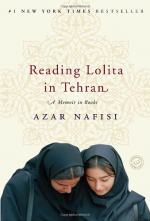
|
| Name: _________________________ | Period: ___________________ |
This test consists of 5 multiple choice questions, 5 short answer questions, and 10 short essay questions.
Multiple Choice Questions
1. What is Mina's job?
(a) Baker.
(b) Teacher.
(c) Mother.
(d) Translator.
2. How is Mr. Nahvi like Jane Austen's character Elizabeth Bennet?
(a) Both are popular with their peers.
(b) Both are obsessed with finding fault with things and people they dislike.
(c) Both are members of the ruling class of society.
(d) Both are able to express their love in acceptable fashion.
3. Why do the students begin to keep vigils at the University of Tehran?
(a) To encourage the government to close down the university.
(b) They are protesting the expulsion of their favorite professors.
(c) They are tired of going to class and want to be part of the Revolution.
(d) To prevent the university from being closed down by the government.
4. What does Nafisi teach during her first semester as a professor at the University of Tehran?
(a) A large seminar using banned books.
(b) A large seminar called Research.
(c) Classes in English as a Second Language.
(d) A small study group related to the works of Nabokov.
5. What game does Nafisi play when she begins wearing a black robe?
(a) She pretends that nothing has changed, and she is not wearing a robe.
(b) She pretends her whole body disappears, and she becomes invisible.
(c) She pretends that everyone can see her as a human being.
(d) She pretends she is a religious leader and has additional authority.
Short Answer Questions
1. Who does Nafisi meet with in Part 3, Chapter 10?
2. How does Part 3, Chapter 11 begin?
3. In Part 4, Chapter 12, where do Nafisi and her husband go?
4. Why does Nafisi collect pictures of martyrs during the war?
5. Who is Mr. Bahir?
Short Essay Questions
1. What does Nafisi do during her time as a member of the Iranian Student Movement?
2. What does Nafisi mean by her statement that she "left Iran, but Iran did not leave me?"
3. Why does Nafisi refer to the concert she attends as a parody of the real thing?
4. Nafisi first mentions the magician in Part 1, Chapter 10. Why does she wait until Part 2, Chapter 20, to describe him more fully?
5. What does it mean to be complicit in one's own crimes?
6. Why does a university staff member describe the Ayatollah's funeral as an event?
7. How has Miss Ruhi changed since her introduction in Part 3, Chapter 14?
8. How does Nafisi react to the increase in protests, demonstrations, and violence associated with the revolution?
9. In Part 3, Chapter 14, why does Nafisi describe her students in such detail?
10. Why does the magician tell Nafisi she should return to teaching?
|
This section contains 1,400 words (approx. 5 pages at 300 words per page) |

|




